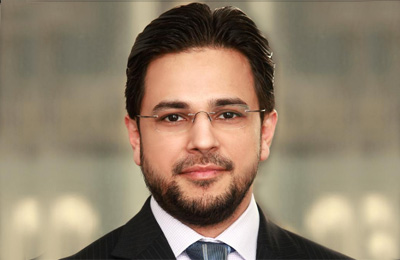
Nazim.... Islamic banking on track to triple profits by 2019.
Islamic banking assets to top $778bn in 2014
DUBAI, December 2, 2014
Islamic banking assets with commercial banks in international markets are set to exceed $778 billion this year, a report said, adding that the global profit pool of Islamic banks is set to triple by 2019.
Global Islamic banking assets witnessed a compound annual growth rate (CAGR) of around 17 per cent from 2009 to 2013, added the World Islamic Banking Competitiveness Report 2014-15: Participation Banking 2.0 released by EY, a global leader in assurance, tax, transaction and advisory services.
Approximately 95 per cent of international Islamic banking assets of commercial banks are based out of nine core markets, five of which are in the GCC. The market share of Islamic banking assets in Saudi Arabia, UAE, Qatar, Kuwait, Bahrain and Malaysia is now between 20 per cent and 49 per cent. The analysis excludes Iran.
Islamic banks in Saudi Arabia, Kuwait and Bahrain represent more than 48.9 per cent, 44.6 per cent and 27.7 per cent market share respectively. Positive progress has been has made in Indonesia, Pakistan and Turkey, with 43.5 per cent, 22.0 per cent and 18.7 per cent CAGR respectively from 2009 to 2013.
Gordon Bennie, MENA financial services leader at EY, said: “The six rapid-growth markets (RGMs) – Qatar, Indonesia, Saudi Arabia, Malaysia, UAE and Turkey (QISMUT) – commanded 80 per cent of the international Islamic banking assets at $625 billion in 2013. QISMUT Islamic banking assets are expected to continue to grow at a five-year CAGR of 19 per cent to reach $1.8 trillion by 2019.”
Ashar Nazim, Global Islamic Finance leader at EY, said: “The Islamic banking industry has gone mainstream in several core markets. This presents new opportunities as well as new challenges, and demands a fundamentally different approach to profitable growth. Customers have mixed emotions about their experiences of dealing with Islamic banks.”
“In the future, growth will be most significant for the banks that are able to strengthen customer experience through the use of digital technology. Banks that do not keep pace with technological advances are expected to face serious pushback from mainstream customers who will gravitate toward the larger conventional players who can deliver on digital,” Nazim added.
EY analysed the sentiment of over 2.2 million customers’ social media posts on their banking experiences with Islamic banks in Saudi Arabia, Bahrain, Kuwait, UAE, Malaysia, Indonesia, Turkey, Qatar and Oman. The results showed that customer satisfaction is mediocre for many Islamic banks.
“Customers are increasingly active online and vocal about their experiences. Going mainstream and building a customer base that is based on added value to the customer has not been easy for Islamic banks,” Nazim continued.
“Bridging the performance gap requires listening to customers. The transformation of customers’ banking experience across channels and all touch points is going to be crucial as digital and social banking and customer expectations continue to evolve. Understanding and analyzing changing customer patterns can help anticipate needs, and encourage desired behaviours.
“Most importantly, user experience conversations have to be an ongoing activity and not a discrete project. Institutionalization of these core capabilities requires boards and executives to efficiently shift their spending from running the bank to developing the bank.”
The ROEs of Islamic banks remain approximately one-fifth lower than those of traditional banks in the same markets. This performance gap could cost its shareholders, and to some extent the investment account holders, up to $17 billion in total forgone profit over the next five years. Structural transformation and scaling up is therefore becoming extremely critical to improve shareholder returns.
Saudi Arabia and Malaysia, and increasingly Turkey and Indonesia, will drive the future of the industry.
Trade finance, mobile payment solutions and managing the cost of regulatory compliance will drive the next phase of profitability. Most Islamic banks remain underweight when it comes to their role in trade finance business.
“The key driving markets for Islamic banking will continue to be Saudi Arabia and Malaysia, with Turkey and Indonesia also establishing themselves as large Islamic banking centres,” said Nazim.
“With increasing market size and greater propensity for the adoption of technology-based, customer-centric solutions, the industry can be expected to further reduce its profitability gap with respect to conventional benchmarks. The challenges of going mainstream will be eliminating operational silos and leveraging customer insights to improve risk management, pricing and channel performance,” he concluded. – TradeArabia News Service







